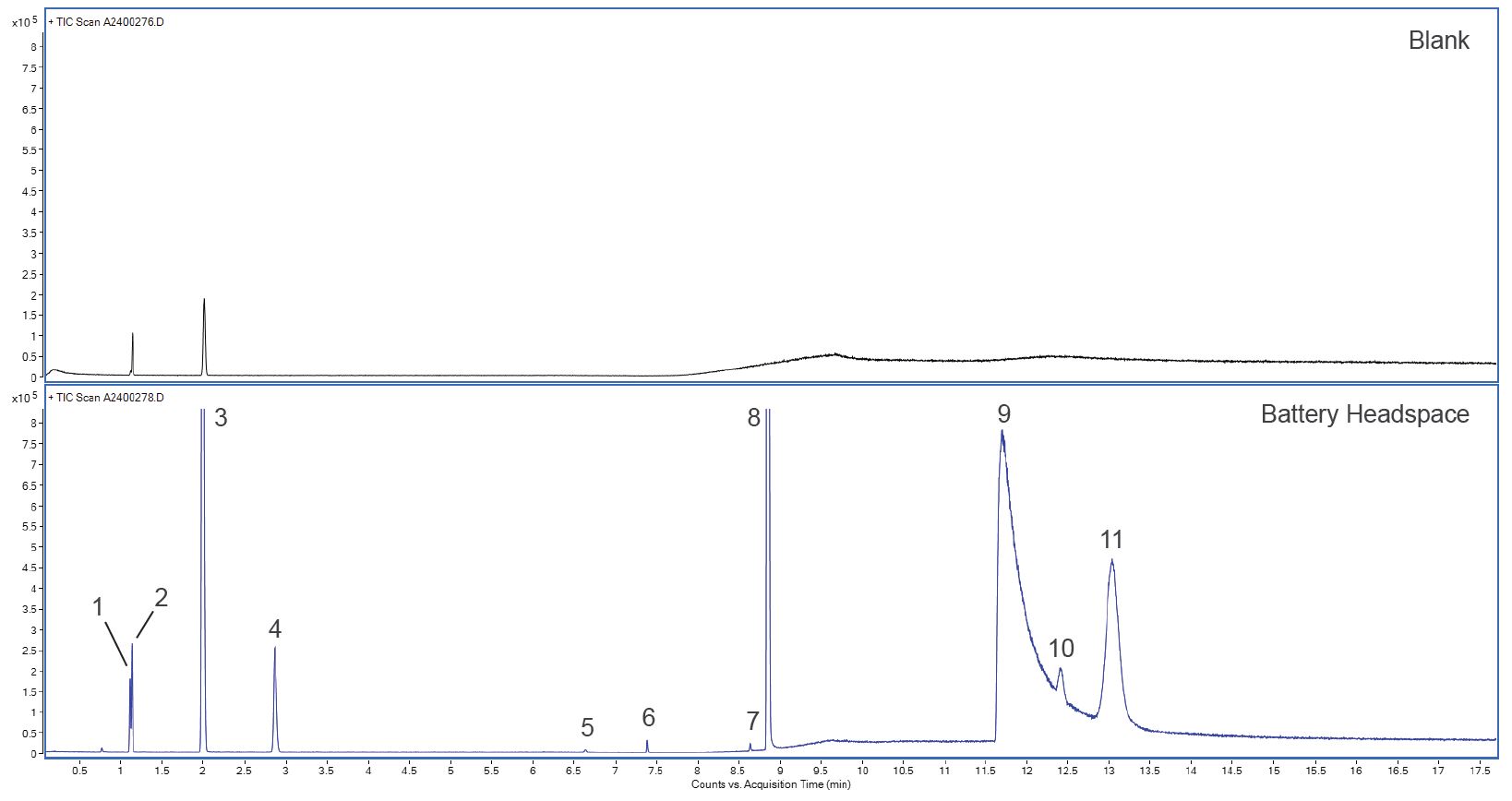Identification of Volatiles Generated by Lithium-Ion Battery Failure
Home » Identification of Volatiles Generated by Lithium-Ion Battery Failure
Identify a wide range of organic and gaseous species within a single data set without requiring a library of prepared standards.
Rechargeable lithium-ion batteries (LIBs) are reliable and energy-dense power sources with established usage in a wide range of portable electronics. With expanding applications, research and product testing are focused upon battery longevity and electrical output, as well as potential degradation pathways undermining their performance characteristics.
Swelling is a common and irreversible degradation process of LIBs, indicating internal gas evolution as the battery’s electrolyte solution decomposes. Typical root causes vary, and may include physical defects or damage, overcharging, overheating, parasitic reactions between electrolyte components or with other internal components, extensive cycling lifetime (age), or any combination of these factors. Chromatographic analysis of the subsequent gas formation can fingerprint the substances evolved during failure and reflects the electrolyte composition, potential mechanisms of failure (leading to gas evolution), and safety implications for similar cells.

This application note describes the general screening approach of analyzing the gas within a swollen LIB pouch cell and identifying the chemical species present by headspace GC/MS. Download the application note to learn more.
Would you like to learn more about gas analysis on batteries?
Contact us today to learn more about gas analysis on batteries. Please complete the form below to have an EAG expert contact you.